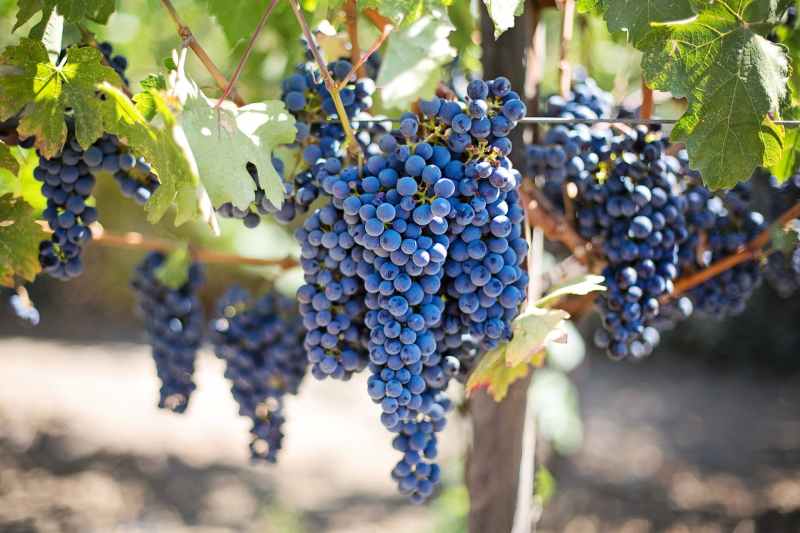Most people – even those who don’t have a particular appreciation for wine – have an opinion about cabernet sauvignon. Some drink nothing else; others steer clear, afraid of this variety’s bold, sometimes bullying reputation. But love it or hate it, cabernet sauvignon is the world’s most widely planted grape and, arguably, the world’s most famous wine. Cabernet sauvignon, lovingly nicknamed simply “cab” by most, thrives in its own unique way on every continent except for Antarctica, gifting the world with its velvety richness, robust flavors, and generous tannins.
A hybrid grape made from the crossing of cabernet franc and sauvignon blanc, the cabernet sauvignon grape is a favorite of winemakers for its ease of cultivation, dependability, and ability to perform beautifully in most climates. Cabernet sauvignon is made into both single varietals and blends, with the ability to add interest and depth to many other wines with its richness and power.

What are the primary flavors of cabernet sauvignon?
While most cabernet sauvignon are full and robust, their flavors do have an extensive range. Standard cabernet sauvignon notes will include dark fruits like black cherry, blackberry, and black currant, with spicy tobacco, vanilla, graphite, leather, cedar, and oak notes. Where they fall between these fruity and earthy notes depends on many factors, including climate and the winemaking process.

What is the taste profile of Cabernet Sauvignon?
Cabernet sauvignon is known to be one of the driest of wines due to its lack of sugar. During the winemaking process, yeast consumes most all of the sugar, resulting in the Cabernet’s signature dryness. It is a very full-bodied, moderately acidic red wine made from cabernet sauvignon grapes. It tends to have very grippy tannins and can feature considerable amounts of oak.

Where does Cabernet Sauvignon grow?
While the most well-known and arguably best region for cabernet sauvignon is Bordeaux, France, it is also successfully grown all over the world in places like Australia, New Zealand, Israel, South Africa, China, Argentina, and Chile.
As with all varietals, the environment of cabernet sauvignon greatly affects how it will taste. When grown in a cooler climate, cabernet sauvignon will taste lighter and more delicate compared to warmer-weather cabernets, which are often intensely fruity and robust.

How to serve cabernet sauvignon
This full-bodied red needs considerable time to breathe before drinking. For optimal enjoyment of this beautifully complex varietal, it’s important to decant for at least two hours before serving. The temperature of Cabernet Sauvignon should be between 55 and 65 degrees Fahrenheit.

What are the best food pairings for Cabernet Sauvignon?
Cabernet Sauvignon is the wine to turn to when faced with a heavy, fatty, meaty dish such as thick, marbled ribeyes and Tomahawks. This is because the tannins in cabernet work together with the fat in the meat to soften the proteins and release a more robust flavor. For this reason, Cabernet is a beautiful choice for lamb and game meats like venison and wild boar.
Cabernet sauvignon is also deliciously paired with hearty, funky cheeses like Gorgonzola and a number of blue varieties.
Of course, Cabernet is also perfect with a classic such as homemade pasta with red sauce.

What is special about Cabernet Sauvignon?
Cabernet Sauvignon has a deserved reputation for being strong, bold, and elegant. The richness and complexity of Cabernet is beloved by wine lovers worldwide. This special variety is also a favorite of winemakers as it will show off its talents in almost any climate and stand up well against insect infestations and disease. For these reasons, cabernet sauvignon is also extensively grown and widely available, which very likely has a great deal to do with its popularity.

How can you tell a good cabernet sauvignon?
If you have the luxury of trying a wine before purchasing, there are a few things to look for once the wine is poured. Color is the key to detecting the best cabernet sauvignon without even picking up a glass. These wines are known for their deep, inky hues, and a good glass will look velvety and rich. As far as taste is concerned, a good cabernet sauvignon will have bold but not overdone levels of acidity and tannin. Flavors should be robust and bold, showcasing their terroir.
If you find yourself in the wine aisle of the store without the ability to uncork a bottle, however, there are ways to detect a good cabernet sauvignon by the bottle alone. A safe bet is to look for labels from highly regarded cabernet-producing areas, such as Napa Valley or Bordeaux. While not every wine from these regions is outstanding, it’s usually safer to select a bottle that comes from a region famous for that particular varietal. Some of our favorite California bottles include Josh cabernet sauvignon, Caymus cabernet sauvignon, and Decoy cabernet sauvignon.




